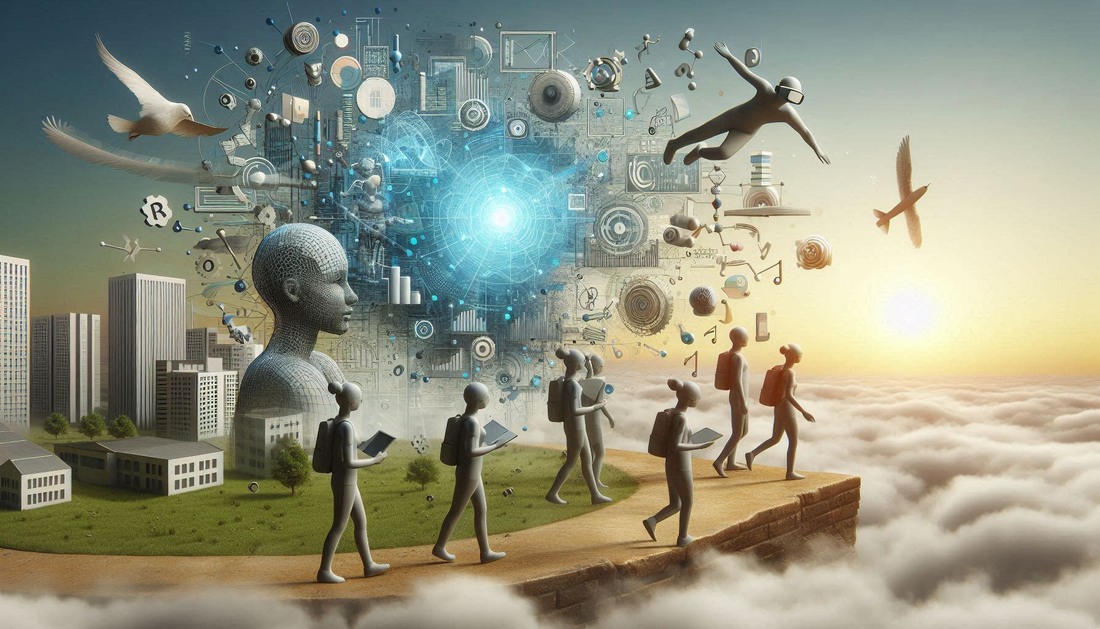
Breaking Down Complex Concepts The Simplifying Power of AR in Education.
Share
In schools, some ideas are hard to understand. Students often find it difficult to grasp abstract concepts, which can lead to feelings of frustration and a lack of interest. But, thanks to Augmented Reality (AR) technology, teachers now have a new way to make complex ideas easier to learn and understand. With AR, students can interact with complex concepts in a more visual and engaging way, making learning more enjoyable and effective. This can lead to better grades, increased confidence, and a lifelong love of learning.
The Challenge of Complex Concepts
Some school subjects like math, science, and engineering have big and tricky ideas that can be hard to understand. These ideas are often hard to picture, connected in complicated ways, and have many sides. Using just textbooks and talks to teach these ideas can make it hard for students to understand, leading to problems like getting overwhelmed, losing interest, and not really getting it.
Information overload: When students are given too much information at once, it can be overwhelming. This makes it hard for them to understand what they're learning and remember what they've learned.
Lack of engagement: Some ideas in school can be hard to care about because they're too abstract (not concrete). This can make students lose interest, not want to learn, and feel unmotivated. When students don't find something interesting, they can tune out and stop trying. As a result, they might not pay attention, participate, or remember what they're taught, which can hold them back from succeeding in school.
Poor understanding: Students might have trouble understanding the basics of a subject, which means they might only know the surface-level information and not be able to use what they've learned in real-life situations. This can lead to a shallow understanding of the material, making it hard for them to apply what they've learned to new problems or situations. As a result, they might struggle to make connections, think critically, or solve problems effectively, holding them back from reaching their full potential.
The Simplifying Power of AR
AR technology can change the way we learn complex ideas. It combines the digital and physical worlds, making learning interactive and fun. This helps in three ways:
- See it Clearly: AR helps students see complex ideas in 3D, making them easier to understand.
- Hands-on Learning: Students can touch and explore virtual objects, helping them understand how things work together.
- Learning in Context: AR shows how complex ideas apply to the real world, making them more meaningful and useful.
Applications of AR in Education
AR is being used in schools to make learning more interactive and fun. Here are some examples:
- Math: AR helps students see and understand math concepts like shapes, equations, and models.
- Science: AR lets students explore tiny things like cells, molecules, and ecosystems in a more engaging way.
- Engineering: AR allows students to design, test, and improve their ideas virtually, making the engineering process easier and more efficient.
Benefits of AR in Education
Using AR in education has many advantages:
- Easier to Understand: AR breaks down tough concepts into simpler, more visual experiences, helping students learn and remember better.
- More Fun Learning: AR makes learning interactive and enjoyable, motivating students to participate and stay engaged.
- Learning Tailored to You: AR allows teachers to create customized lessons that fit each student's unique needs and abilities, making learning more effective.
Best Practices for Implementing AR in Education
To make AR work well in education, follow these tips:
- Know What You Want to Achieve: Make sure AR activities align with what you want students to learn and achieve.
- Train Teachers: Teach teachers how to use AR technology and how to use it to teach effectively.
- Include All Students: Design AR activities that work for different learning styles and abilities, so all students can benefit.
Conclusion
In short, AR makes learning easier and more fun! It helps teachers explain tough ideas in a simple way, so students can understand and achieve more. As AR gets better, it can change education forever. Let's use AR to make learning exciting and accessible for all! The future of learning is here, and it's time to start exploring the endless possibilities that AR has to offer. By embracing this technology, we can unlock a new era of learning that's engaging, interactive, and tailored to each student's needs.
